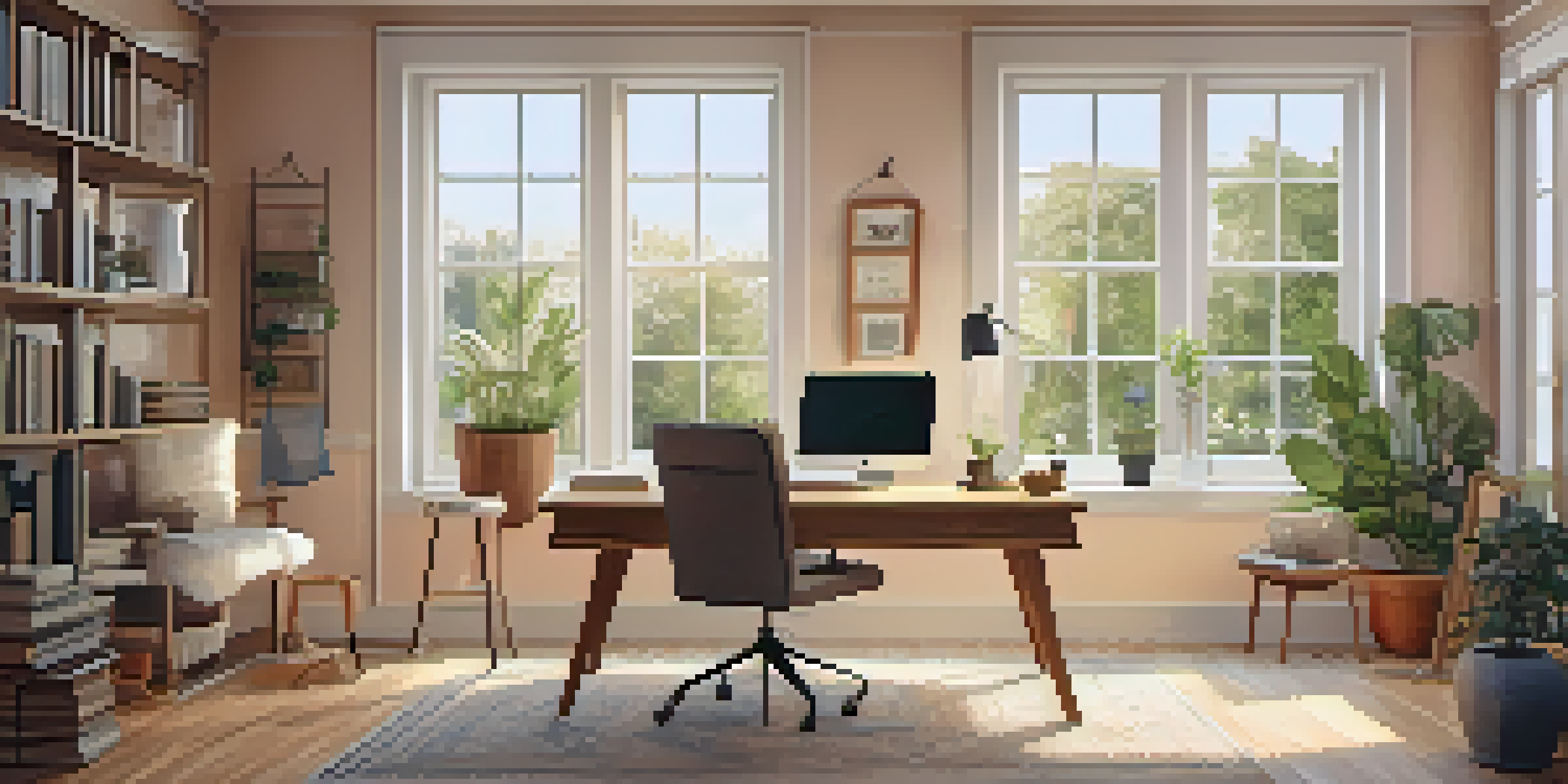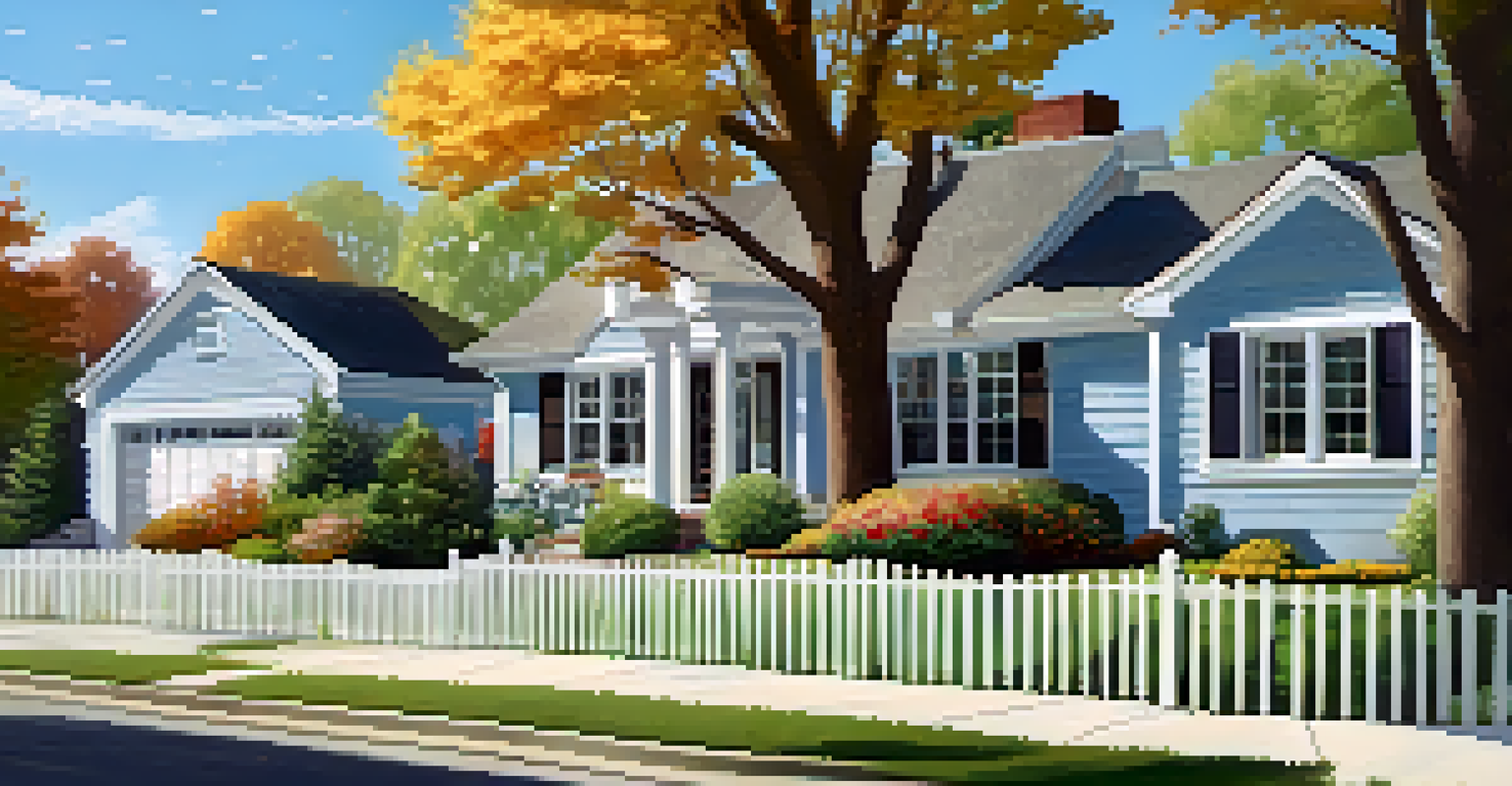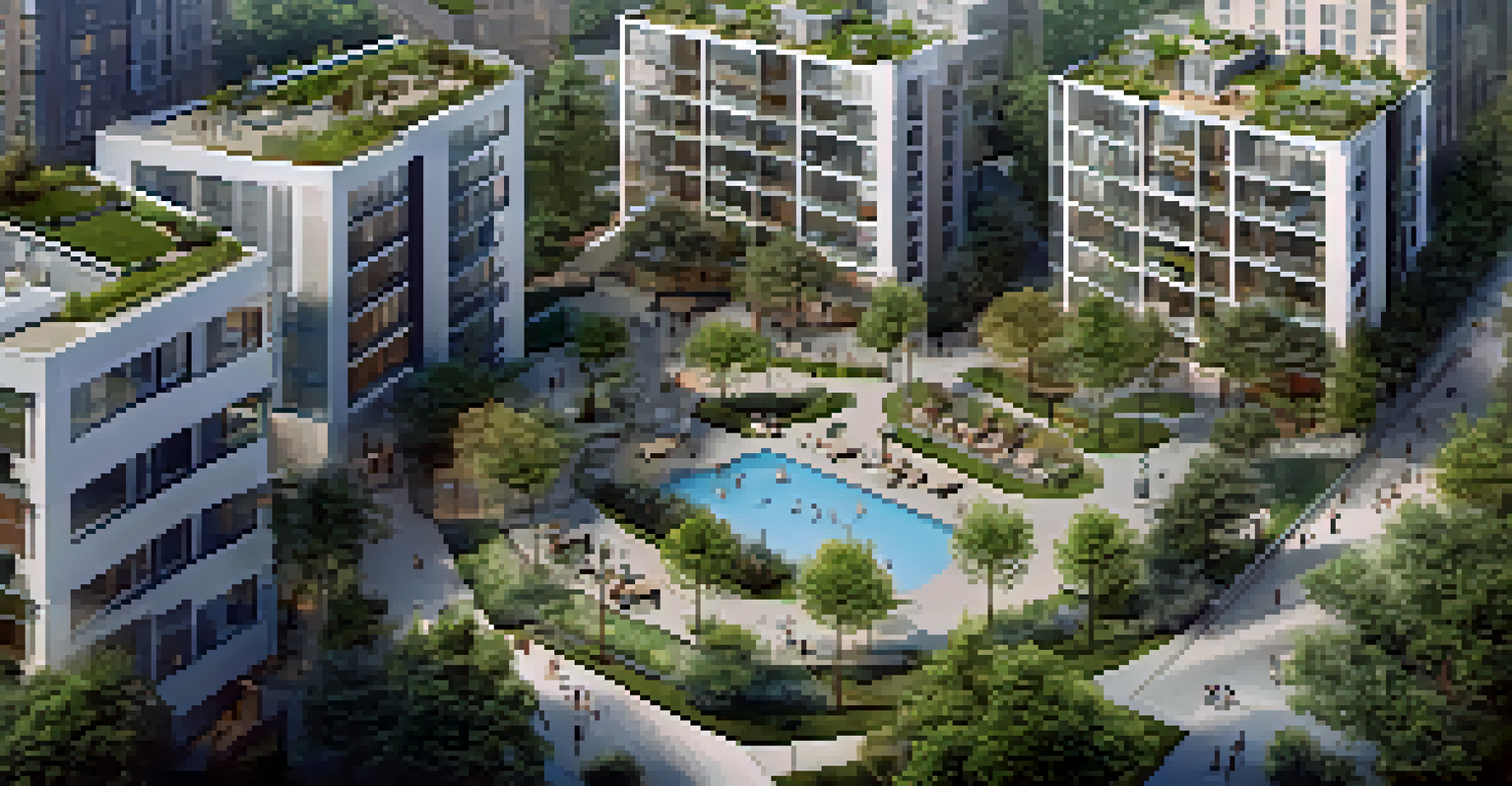Analyzing the Effects of Remote Work on Dallas Real Estate

Understanding Remote Work's Rise in Dallas
The shift to remote work has transformed the way we think about jobs and locations. In Dallas, this trend has gained significant momentum, allowing employees to work from home rather than commuting to the office. This newfound flexibility has changed the dynamics of where people choose to live, often leading them to seek homes that better fit their lifestyle preferences.
Remote work has transformed the way we think about jobs and locations.
As more companies adopt hybrid or fully remote models, the allure of living further away from the city center becomes increasingly appealing. People are no longer tied to their office locations and can prioritize spacious homes with amenities that enhance their work-from-home experience. This shift not only affects individual choices but also influences broader market trends.
With this change, Dallas has seen an uptick in demand for suburban areas and smaller towns around the city. Families are looking for homes that offer more space, yards, and a sense of community, all while maintaining reasonable access to urban conveniences. The remote work phenomenon is reshaping the real estate landscape in ways we are just beginning to understand.
Impact on Housing Demand and Prices
As remote work continues to gain traction, the demand for housing in Dallas has experienced notable shifts. Suburban areas are seeing a surge in interest, leading to increased property prices in regions that previously offered more affordable options. This trend reflects a broader desire for larger living spaces, pushing buyers to reconsider their location priorities.

Real estate agents report that homes in areas like Frisco and McKinney are being snapped up quickly, as buyers flock to these regions for their suburban charm and community feel. With the added benefit of remote work flexibility, many buyers are willing to pay a premium for a home that better suits their evolving lifestyle needs. This spike in demand has created a competitive market, often resulting in bidding wars.
Remote Work Boosts Suburban Demand
The rise of remote work has led to increased interest in suburban homes, as people prioritize spacious living and community environments.
On the flip side, urban areas in Dallas may see a slight cooling in demand as some residents choose to leave the hustle and bustle of city life for quieter surroundings. However, this doesn't necessarily mean a long-term decline in urban property values, as many are still drawn to the cultural and entertainment offerings that city living provides.
Changing Preferences for Home Features
With the rise of remote work, homebuyers are redefining what they want in a property. Features that accommodate a work-from-home lifestyle are in high demand, such as home offices, soundproof spaces, and high-speed internet capabilities. Buyers are increasingly looking for homes that not only provide comfort but also enhance productivity.
The rise of remote work is reshaping the real estate landscape in ways we are just beginning to understand.
Outdoor spaces have also become a priority, with gardens, patios, and balconies becoming essential for those who spend long hours at home. The need for a relaxing atmosphere to unwind after work hours is driving demand for properties that offer these amenities. People want their homes to be a sanctuary where they can both work effectively and enjoy leisure time.
As a result, builders and developers are adapting their designs to meet these new preferences. Open floor plans that allow for versatile use of space and energy-efficient features are now more sought after than ever before. This shift in demand is likely to influence future real estate developments throughout the Dallas area.
The Effect on Rental Markets
The rental market in Dallas is also experiencing changes due to the remote work trend. Many renters are opting for larger spaces that accommodate remote work setups, leading to increased demand for single-family homes and townhouses. This shift is creating new opportunities for landlords and property management companies to cater to these evolving needs.
Moreover, as some individuals choose to move further away from their workplaces, the competition for rental properties in suburban areas is heating up. Landlords are adapting by offering flexible lease terms and incorporating desirable amenities that appeal to remote workers. This approach helps attract tenants looking for a comfortable living environment that supports their work-life balance.
Home Features Shift for Remote Work
Homebuyers are now seeking properties with dedicated workspaces and outdoor areas to enhance their remote work experience.
However, urban rental markets are witnessing a varied response, with some areas experiencing a decrease in demand. Many renters are reconsidering their need for city-center living when remote work allows them to live further away. This evolution in tenant preferences is prompting landlords to rethink their strategies to remain competitive in a changing landscape.
Commercial Real Estate Challenges
The rise of remote work is not just impacting residential real estate; it’s also creating challenges for commercial properties in Dallas. With many companies transitioning to remote or hybrid work models, the demand for traditional office spaces has declined. This shift has left landlords pondering how to adapt their properties to attract tenants.
Some commercial landlords are reimagining their spaces, transforming them into collaborative work environments that promote flexibility and community. This could mean creating co-working spaces, meeting hubs, or even incorporating amenities that cater to the needs of a remote workforce. By doing this, they can appeal to businesses looking for innovative workspaces despite the changing climate of remote work.
Additionally, the commercial real estate market could see a shift toward more mixed-use developments that combine residential and commercial spaces. This approach not only diversifies income streams but also creates vibrant communities where people can live, work, and play—all within walking distance. Such developments may become the blueprint for future commercial ventures in the city.
Long-Term Implications for Urban Planning
As remote work reshapes the Dallas real estate landscape, urban planning will need to adapt to these new realities. City planners and policymakers must consider how to support the changing needs of residents who may prioritize different amenities and services in their neighborhoods. This could involve investing in parks, public transportation, and community spaces that enhance quality of life.
Moreover, the shift toward remote work could lead to a reevaluation of zoning laws. Areas that were previously designated for commercial use may be transformed into mixed-use neighborhoods that blend residential, retail, and office spaces. Such flexibility could foster more sustainable urban environments that better serve the community's evolving preferences.
Commercial Real Estate Faces Challenges
As companies adopt remote work models, traditional office space demand is declining, prompting landlords to rethink their property usage.
While these changes may take time to implement, they represent an exciting opportunity for Dallas to redefine itself as a city that embraces new work and living styles. By proactively addressing the implications of remote work on urban planning, Dallas can position itself as a forward-thinking city that prioritizes the well-being and needs of its residents.
Conclusion: The Future of Dallas Real Estate
The effects of remote work on Dallas real estate are profound and multi-faceted. As the demand for suburban living rises and preferences shift toward more accommodating home features, the city is likely to see continued transformations in its real estate market. Buyers and renters are adapting to new lifestyles, and the market is responding accordingly.
Both residential and commercial sectors are feeling the impact of this change, leading to innovative approaches in property development and urban planning. As Dallas evolves to meet the needs of its residents, it has the potential to strengthen its position as a thriving hub for remote work and flexible living.

Ultimately, the future of Dallas real estate will depend on how well it adapts to these changing dynamics. By embracing the opportunities presented by remote work, the city can continue to grow and attract new residents, making it a desirable place to live and work for years to come.